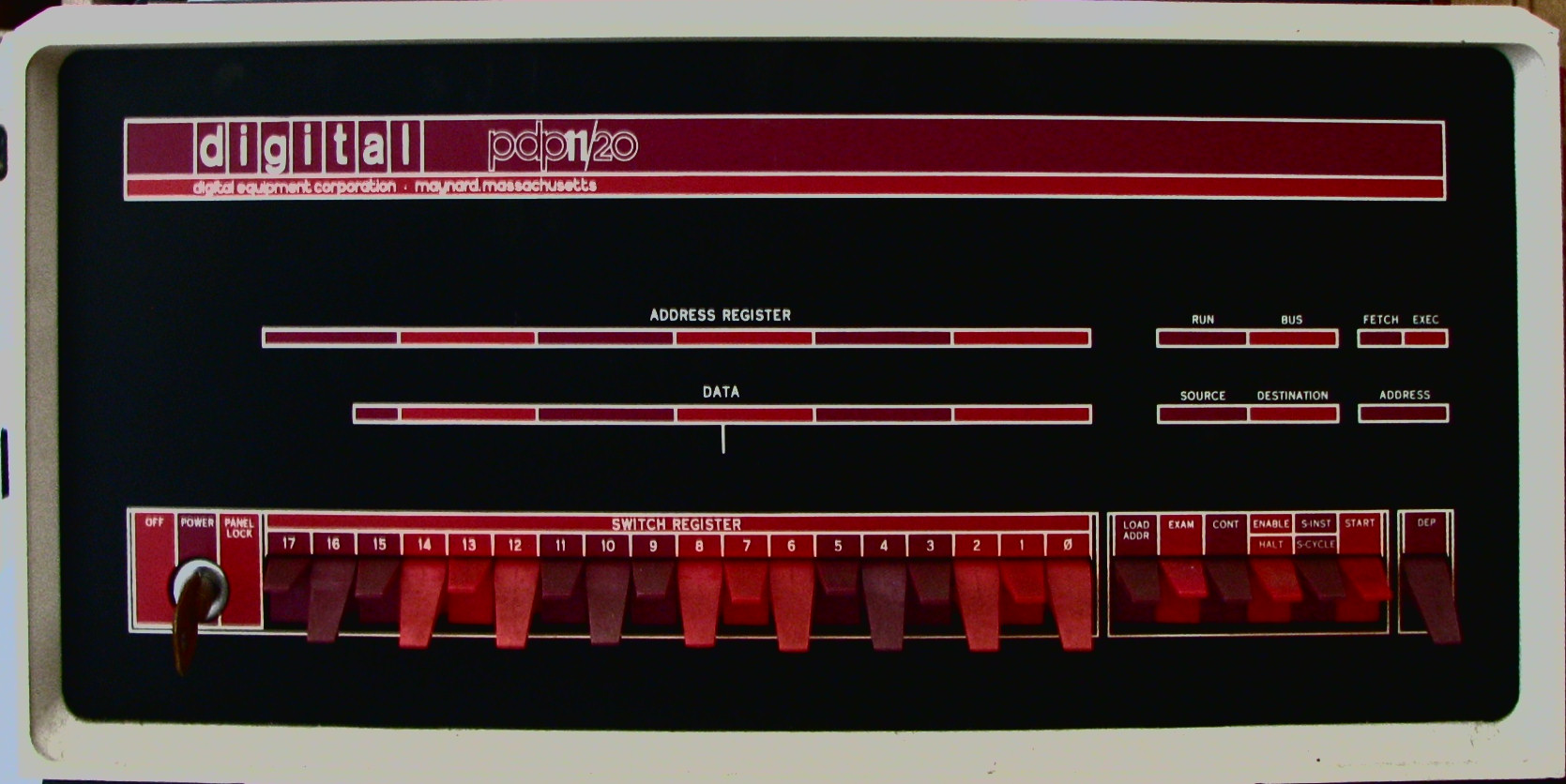

Inside the DEC PDP-11/20

The PDP 11/20 as sold had no programs in it. They had to be loaded in, one at a time. Sometimes one program would run upon the results of another program. When the computer started up, the "console" front panel was often used to load the first program, bit by bit. The console is also a diagnostic tool for repair and maintenance. For applications like the FOSDEC, programs would be stored in ROM (fixed memory) or loaded automatically from paper tapes or disk drives.
For program development and for use, the PDP-11/20 was often sold with a Teletype, a printing terminal with its paper-tape reader and punch; and optionally with a Remex brand high-speed paper tape reader and punch.
"Paper tapes" contain data and program, punched as sets of 8 holes in rows. They are read by rows to represent "bytes" of data or a single character of text in "ASCII" code. In the era before hard drives and floppy drives, paper tape was sufficient to hold modest amounts of data and programs.
The boards inside this PDP-11-20 include:
# KA11 CPU to run the programs
# KWllL or KY11L programmer's console or front panel
# RL11A or DL11A Teletype serial interface
# three MM11FX modules of 8Kbytes of RAM>/b>
(The front panel is to the right in the photo.) Colored tabs on DEC’s boards represent different kinds of boards; numbers on the tables name the boards. The boards have gold-plated edge connectors, which plug into slots in a "backplane" to cross connected the boards together. Each board had dozens of integrated circuits which perform logic functions – AND, OR, NOT – or hold logical states in "flip flops". Today, one chip contains much of that logic.
MARCH - PDP-11/20 Collection
